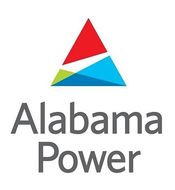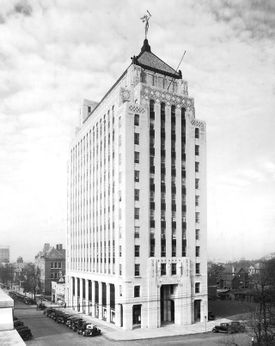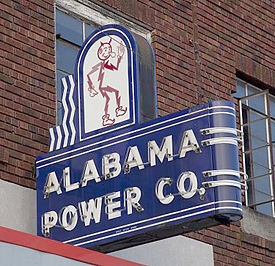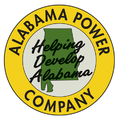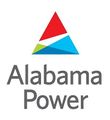Alabama Power Company: Difference between revisions
No edit summary |
|||
| (18 intermediate revisions by 2 users not shown) | |||
| Line 1: | Line 1: | ||
The '''Alabama Power Company''' is an investor-owned public utility, and the second largest division of [[Southern Company]]. It generates and distributes electricity to most of the southern two thirds of [[Alabama]]. Its headquarters are the [[Alabama Power Building]] in downtown [[Birmingham]]. | [[File:2016 APCO logo.jpg|right|175px]] | ||
The '''Alabama Power Company''' is an investor-owned public utility, and the second largest division of [[Southern Company]]. It generates and distributes electricity to most of the southern two thirds of [[Alabama]]. Its headquarters are the [[Alabama Power Building]] in downtown [[Birmingham]]. The CEO is [[Mark Crosswhite]], who succeeded [[Charles McCrary]] in March [[2014]]. | |||
The Alabama Power Company was founded by [[William Lay]] on December 4, [[1906]] in [[Gadsden]]. Part of Lay's reason for founding the utility was to spur development of the region. Alabama Power was one of the first electric companies to make economic development a priority of its business. | The Alabama Power Company was founded by [[William Lay]] on [[December 4]], [[1906]] in [[Gadsden]]. Part of Lay's reason for founding the utility was to spur development of the region. Alabama Power was one of the first electric companies to make economic development a priority of its business. | ||
The company | The company was awarded permission to construct a dam on the [[Coosa River]], but Lay was unable to finance the project. He sold the company to [[James Mitchell]] who had spent 17 years constructing an electric system in Brazil. Under Mitchell's leadership the [[Lay Dam|Coosa River Dam]] was constructed, going into operation in [[1914]]. In [[1918]], Alabama Power deeded its Muscle Shoals operations to the U. S. government as a gesture of aid in the War effort. The facilities were used as the nucleus of the [[Tennessee Valley Authority]]. | ||
In [[1920]], under new president [[Tom Martin]], Alabama Power's economic development and industrial recruitment activities were formalized as the companies "New Industries Division". In [[1922]] the company launched [[WSY]], the first broadcast radio station in Alabama. The demand for entertainment led the company to donate the station's equipment to [[Auburn University|Alabama Polytechnic Institute]] rather than devote itself to programming. | In [[1920]], under new president [[Tom Martin]], Alabama Power's economic development and industrial recruitment activities were formalized as the companies "New Industries Division". In [[1922]] the company launched [[WSY]], the first broadcast radio station in Alabama. The demand for entertainment led the company to donate the station's equipment to [[Auburn University|Alabama Polytechnic Institute]] rather than devote itself to programming. | ||
In [[1923]], Alabama Power hired the Institute's first female graduate, [[Maria Whitson]] as its first female engineer. In [[ | [[Image:Alabama Power Building.jpg|left|thumb|275px|The Alabama Power Building in Birmingham]] | ||
[[Image:Reddy Kilowatt.jpg|right|thumb|100px|Reddy Kilowatt]] | |||
In [[1923]], Alabama Power hired the Institute's first female graduate, [[Maria Whitson]] as its first female engineer. In [[1925]] the company moved its corporate headquarters to a new [[Alabama Power Building (1925)|skyscraper]] in [[Birmingham]]. Alabama Power employee [[Ashton Collins]] designed electrical mascot [[Reddy Kilowatt]], a cartoon character used by utility companies worldwide. | |||
Alabama Power president Tom Martin gradually acquired utility companies in the neighboring states of Mississippi and Georgia, creating holding companies in those states. In [[1927]] he merged Alabama Power with his Gulf Electric Power Company, bringing South Alabama into APC's service area. | Alabama Power president Tom Martin gradually acquired utility companies in the neighboring states of Mississippi and Georgia, creating holding companies in those states. In [[1927]] he merged Alabama Power with his Gulf Electric Power Company, bringing South Alabama into APC's service area. | ||
[[Image:Ala Power sign Attalla.jpg|left|thumb|275px|Alabama Power Co. neon sign in Attalla]] | |||
In [[1940]] the TVA took over Alabama Power's profitable northern division. In [[1941]], Martin founded the [[Southern Research Institute]] in Birmingham. Early research directed by Martin established the suitability of Southern pine pulp in the manufacture of paper. SRI also develops the basic research for heat-pump technology. | In [[1940]] the TVA took over Alabama Power's profitable northern division. In [[1941]], Martin founded the [[Southern Research Institute]] in Birmingham. Early research directed by Martin established the suitability of Southern pine pulp in the manufacture of paper. SRI also develops the basic research for heat-pump technology. | ||
Following in Reddy Killowatt's footsteps, [[Louie the Lightning Bug]] is created at Alabama Power and is later used in national electrical safety campaigns. | Following in Reddy Killowatt's footsteps, [[Louie the Lightning Bug]] is created at Alabama Power and is later used in national electrical safety campaigns. | ||
In the 1990s Alabama Power | In the 1990s Alabama Power worked with its parent, Southern Company, in the development of coal gasification and switchgrass fuel; two technologies that show promise in reducing air pollution from coal-fired generation plants. Another technology tested by Alabama Power significantly reduces mercury emissions. | ||
In [[1999]] the Environmental Protection Agency initiated an enforcement action against the company for violations of the Clean Air Act. | In [[1999]] the Environmental Protection Agency initiated an enforcement action against the company for violations of the Clean Air Act. That same year, the company opened a service center and showroom for electric vehicles as part of a partnership with the [[Birmingham Area Chamber of Commerce]]'s "[[NoZoner]]" program. | ||
The [[Alabama Power Foundation]], established in [[1989]] funds grants for community and environmental quality-of-life projects, especially along the watershed of rivers which the company uses for hydroelectric generation. The foundation operates the "[[Renew Our Rivers]]" program. | In [[2006]], Alabama Power announced that it would spend $2 billion upgrading pollution controls at its coal-burning plants as part of a settlement with the agency. Legal claims against five coal-fired plants filed by the [[Southern Environmental Law Center]] were unsuccessful, but the SELC plans to appeal the decisions. | ||
The [[Alabama Power Foundation]], established in [[1989]], funds grants for community and environmental quality-of-life projects, especially along the watershed of rivers which the company uses for hydroelectric generation. The foundation operates the "[[Renew Our Rivers]]" program. | |||
From [[2004]] to [[2008]] Alabama Power used a pair of talking birds, Mickey and Ben, in commercials and on billboards. The subject of the utility's expenditures on advertising was broached in a meeting with the [[Alabama Public Service Commission]] in October 2008. PSC commissioners Jan Cook and Susan Parker told Alabama Power officials that consumers were angry about seeing the utility put money into ad campaigns while asking for rate hikes. The utility currently spends about $9 million per year on advertising. | |||
In [[2019]] Alabama Power closed 40 of its 86 local offices across the state, citing increasing use of online payments and authorized payment locations in retail stores. | |||
==Presidents== | |||
* [[William Lay]], 1906-1912 | |||
* [[James Mitchell]], 1912-1913 | |||
* [[Frank Washburn]], 1913-1915 | |||
* [[James Mitchell]], 1915-1920 | |||
* [[Tom Martin]], 1920-1949 | |||
* [[James Barry]], 1949-1952 | |||
* [[Lewis Smith]], 1952-1957 | |||
* [[Walter Bouldin]], 1957-1969 | |||
* [[Joe Farley]], 1969-1989 | |||
* [[Elmer Harris]], 1989-2001 | |||
* [[Charles McCrary]], 2001-2014 | |||
* [[Mark Crosswhite]], 2014-2022 | |||
* [[Jeff Peoples]], 2023– | |||
==Logos== | |||
<gallery> | |||
File:1920s APCO monogram.png|1910-20s monogram logo | |||
File:1954 APCO logo.png|1954 logo | |||
File:1960s APCO logo.png|1960s logo | |||
File:1973 APCO logo.png|1973 logo | |||
File:1977 APCO logo.png|1977 logo | |||
File:1996 APCO logo.png|1996 logo | |||
File:APCO logo.jpg|2016 logo | |||
</gallery> | |||
==Facilities== | ==Facilities== | ||
===Generating plants=== | ===Generating plants=== | ||
* James M. Barry Electric Generating Plant (Mobile River, near Bucks, Mobile County) - coal and natural gas | * James M. Barry Electric Generating Plant (Mobile River, near Bucks, Mobile County) - coal and natural gas | ||
* [[Ernest C. Gaston Electric Generating Plant]] ([[Coosa River]] near [[Wilsonville]], [[Shelby County]]) - coal | * [[Ernest C. Gaston Electric Generating Plant]] ([[Coosa River]] near [[Wilsonville]], [[Shelby County]]) - coal | ||
* [[William Crawford Gorgas Electric Generating Plant]] ([[Black Warrior River]] near [[Parrish]], [[Walker County]]) - coal | * [[Plant Gorgas|William Crawford Gorgas Electric Generating Plant]] ([[Black Warrior River]] near [[Parrish]], [[Walker County]]) - coal | ||
* Greene County Electric Generating Plant ([[Black Warrior River]] near Demopolis, Marengo County) - coal, oil and gas | * Greene County Electric Generating Plant ([[Black Warrior River]] near Demopolis, Marengo County) - coal, oil and gas | ||
* [[Miller Steam Plant]] ([[Black Warrior River]] near [[West Jefferson]], [[Jefferson County]]) - coal | * [[Miller Steam Plant]] ([[Black Warrior River]] near [[West Jefferson]], [[Jefferson County]]) - coal | ||
| Line 49: | Line 84: | ||
===Other facilities=== | ===Other facilities=== | ||
* [[Consolidated Electric Light & Power Plant]] | * [[Consolidated Electric Light & Power Plant]] | ||
===Former facilities=== | |||
* [[Powell Steam Plant]], [[Birmingham]] | |||
* [[Gadsden Steam Plant|Gadsden Electric Generating Plant]] ([[Coosa River]] near Gadsden, Etowah County) - coal and natural gas (shut down January 1, 2023) | |||
==References== | ==References== | ||
* Park, Jennifer (October 3, 1999) "[http://www.bizjournals.com/birmingham/stories/1999/10/04/story4.html?page=2 Charging station for electric fleet will be a first]" {{BBJ}} | |||
* Atkins, Leah Rawl (2006). ''Developed for the Service of Alabama: The Centennial History of the Alabama Power Company 1906-2006''. Birmingham: Alabama Power Company ISBN 9780978675301 | * Atkins, Leah Rawl (2006). ''Developed for the Service of Alabama: The Centennial History of the Alabama Power Company 1906-2006''. Birmingham: Alabama Power Company ISBN 9780978675301 | ||
* Chandler, Kim (October 8, 2008) "Alabama Power plucking bird ads." {{BN}} | |||
* Archibald, John (October 16, 2013) "How much money does Alabama Power spend to get its way? More than most." {{BN}} | |||
* Pillion, Dennis (November 2, 2023) "Who would pay for coal ash cleanup? You or the power company?" {{AL}} | |||
* Green, Miranda (January 17, 2024) "[https://www.theguardian.com/environment/2024/jan/17/alabama-power-electric-utility-finance-birmingham-news ‘Control the narrative’: how an Alabama utility wields influence by financing news]." ''The Guardian'' | |||
== External links == | == External links == | ||
Latest revision as of 18:01, 18 January 2024
The Alabama Power Company is an investor-owned public utility, and the second largest division of Southern Company. It generates and distributes electricity to most of the southern two thirds of Alabama. Its headquarters are the Alabama Power Building in downtown Birmingham. The CEO is Mark Crosswhite, who succeeded Charles McCrary in March 2014.
The Alabama Power Company was founded by William Lay on December 4, 1906 in Gadsden. Part of Lay's reason for founding the utility was to spur development of the region. Alabama Power was one of the first electric companies to make economic development a priority of its business.
The company was awarded permission to construct a dam on the Coosa River, but Lay was unable to finance the project. He sold the company to James Mitchell who had spent 17 years constructing an electric system in Brazil. Under Mitchell's leadership the Coosa River Dam was constructed, going into operation in 1914. In 1918, Alabama Power deeded its Muscle Shoals operations to the U. S. government as a gesture of aid in the War effort. The facilities were used as the nucleus of the Tennessee Valley Authority.
In 1920, under new president Tom Martin, Alabama Power's economic development and industrial recruitment activities were formalized as the companies "New Industries Division". In 1922 the company launched WSY, the first broadcast radio station in Alabama. The demand for entertainment led the company to donate the station's equipment to Alabama Polytechnic Institute rather than devote itself to programming.
In 1923, Alabama Power hired the Institute's first female graduate, Maria Whitson as its first female engineer. In 1925 the company moved its corporate headquarters to a new skyscraper in Birmingham. Alabama Power employee Ashton Collins designed electrical mascot Reddy Kilowatt, a cartoon character used by utility companies worldwide.
Alabama Power president Tom Martin gradually acquired utility companies in the neighboring states of Mississippi and Georgia, creating holding companies in those states. In 1927 he merged Alabama Power with his Gulf Electric Power Company, bringing South Alabama into APC's service area.
In 1940 the TVA took over Alabama Power's profitable northern division. In 1941, Martin founded the Southern Research Institute in Birmingham. Early research directed by Martin established the suitability of Southern pine pulp in the manufacture of paper. SRI also develops the basic research for heat-pump technology.
Following in Reddy Killowatt's footsteps, Louie the Lightning Bug is created at Alabama Power and is later used in national electrical safety campaigns.
In the 1990s Alabama Power worked with its parent, Southern Company, in the development of coal gasification and switchgrass fuel; two technologies that show promise in reducing air pollution from coal-fired generation plants. Another technology tested by Alabama Power significantly reduces mercury emissions.
In 1999 the Environmental Protection Agency initiated an enforcement action against the company for violations of the Clean Air Act. That same year, the company opened a service center and showroom for electric vehicles as part of a partnership with the Birmingham Area Chamber of Commerce's "NoZoner" program.
In 2006, Alabama Power announced that it would spend $2 billion upgrading pollution controls at its coal-burning plants as part of a settlement with the agency. Legal claims against five coal-fired plants filed by the Southern Environmental Law Center were unsuccessful, but the SELC plans to appeal the decisions.
The Alabama Power Foundation, established in 1989, funds grants for community and environmental quality-of-life projects, especially along the watershed of rivers which the company uses for hydroelectric generation. The foundation operates the "Renew Our Rivers" program.
From 2004 to 2008 Alabama Power used a pair of talking birds, Mickey and Ben, in commercials and on billboards. The subject of the utility's expenditures on advertising was broached in a meeting with the Alabama Public Service Commission in October 2008. PSC commissioners Jan Cook and Susan Parker told Alabama Power officials that consumers were angry about seeing the utility put money into ad campaigns while asking for rate hikes. The utility currently spends about $9 million per year on advertising.
In 2019 Alabama Power closed 40 of its 86 local offices across the state, citing increasing use of online payments and authorized payment locations in retail stores.
Presidents
- William Lay, 1906-1912
- James Mitchell, 1912-1913
- Frank Washburn, 1913-1915
- James Mitchell, 1915-1920
- Tom Martin, 1920-1949
- James Barry, 1949-1952
- Lewis Smith, 1952-1957
- Walter Bouldin, 1957-1969
- Joe Farley, 1969-1989
- Elmer Harris, 1989-2001
- Charles McCrary, 2001-2014
- Mark Crosswhite, 2014-2022
- Jeff Peoples, 2023–
Logos
Facilities
Generating plants
- James M. Barry Electric Generating Plant (Mobile River, near Bucks, Mobile County) - coal and natural gas
- Ernest C. Gaston Electric Generating Plant (Coosa River near Wilsonville, Shelby County) - coal
- William Crawford Gorgas Electric Generating Plant (Black Warrior River near Parrish, Walker County) - coal
- Greene County Electric Generating Plant (Black Warrior River near Demopolis, Marengo County) - coal, oil and gas
- Miller Steam Plant (Black Warrior River near West Jefferson, Jefferson County) - coal
- Joseph M. Farley Nuclear Electric Generating Plant (Chattahoochee River, near Dothan, Houston County) - nuclear
- Weiss Hydroelectric Generating Plant (Coosa River near Leesburg, Cherokee County) - hydro
- Henry Hydroelectric Generating Plant (Coosa River near Ohatchee, Calhoun County) - hydro
- Logan Martin Hydroelectric Generating Plant (Coosa River near Vincent, Shelby County) - hydro
- Lay Hydroelectric Generating Plant (Coosa River near Clanton, Chilton County) - hydro
- Mitchell Hydroelectric Generating Plant (Coosa River near Verbena, Chilton County) - hydro
- Bouldin Hydroelectric Generating Plant (Coosa River near Wetumpka, Elmore County) - hydro
- Martin Hydroelectric Generating Plant (Tallapoosa River near Tallassee, Elmore County) - hydro
- Thurlow Hydroelectric Generating Plant (Tallapoosa River near Tallassee, Elmore County) - hydro
- Yates Hydroelectric Generating Plant (Tallapoosa River near Tallassee, Elmore County) - hydro
- Harris Hydroelectric Generating Plant (Tallapoosa River near Lineville, Clay County) - hydro
- Smith Hydroelectric Generating Plant (Sipsey Fork near Jasper, Walker County) - hydro
- Bankhead Hydroelectric Generating Plant (Black Warrior River near Northport, Tuscaloosa County) - hydro
- Holt Hydroelectric Generating Plant (Black Warrior River) near Holt, Tuscaloosa County) - hydro
- Theodore Cogen Facility (near Theodore, Mobile County) - gas
- Washington County Cogen Facility (near McIntosh, Washington County) - gas
- GE Plastics Cogen Facility (Burkville, Lowndes County) - gas
Other facilities
Former facilities
- Powell Steam Plant, Birmingham
- Gadsden Electric Generating Plant (Coosa River near Gadsden, Etowah County) - coal and natural gas (shut down January 1, 2023)
References
- Park, Jennifer (October 3, 1999) "Charging station for electric fleet will be a first" Birmingham Business Journal
- Atkins, Leah Rawl (2006). Developed for the Service of Alabama: The Centennial History of the Alabama Power Company 1906-2006. Birmingham: Alabama Power Company ISBN 9780978675301
- Chandler, Kim (October 8, 2008) "Alabama Power plucking bird ads." The Birmingham News
- Archibald, John (October 16, 2013) "How much money does Alabama Power spend to get its way? More than most." The Birmingham News
- Pillion, Dennis (November 2, 2023) "Who would pay for coal ash cleanup? You or the power company?" AL.com
- Green, Miranda (January 17, 2024) "‘Control the narrative’: how an Alabama utility wields influence by financing news." The Guardian
External links
- Alabama Power website
